
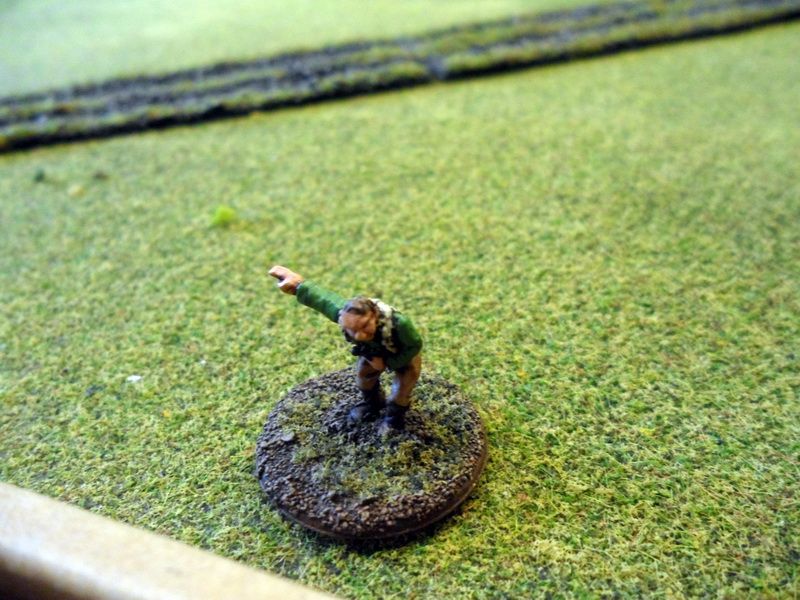

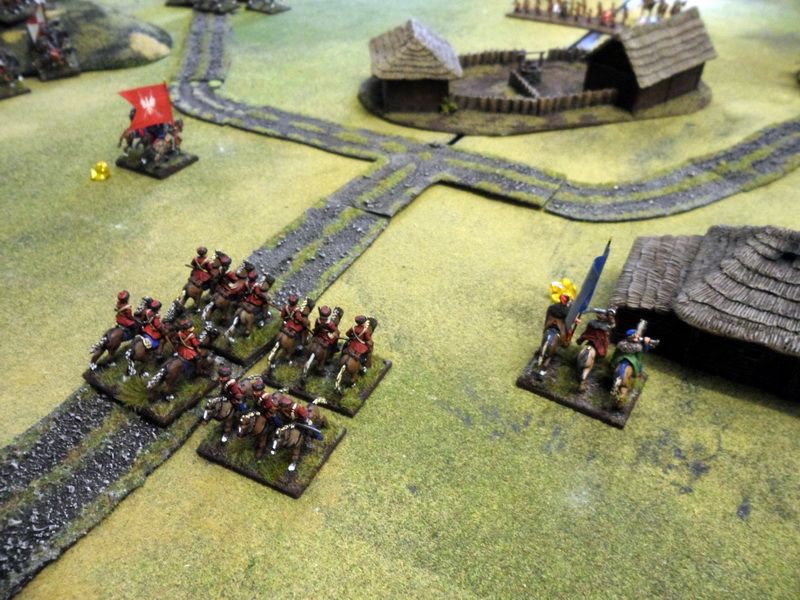
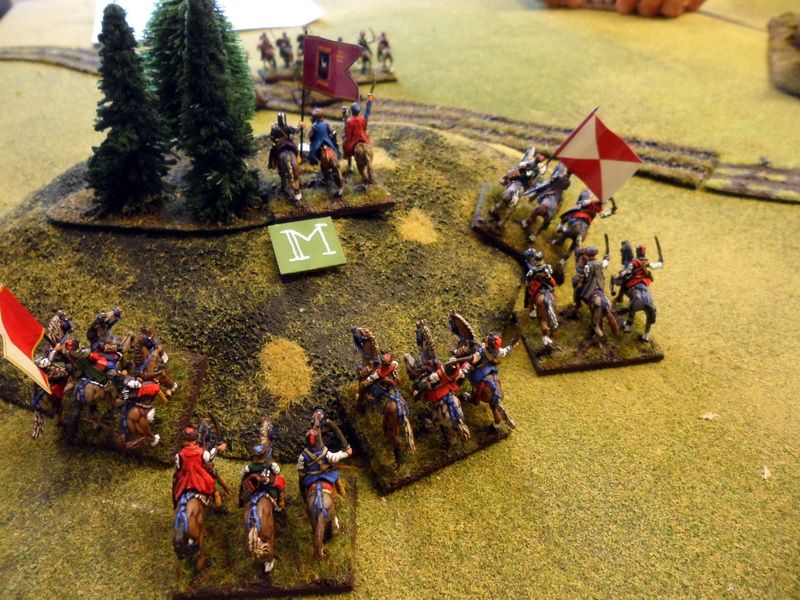 Andreas and I played two more skirmish games this weekend, the understanding of the concept and tactics for this level of the game is starting to evolve in our minds and we're having a ton of fun. This weekend we also followed the concept of hidden army lists (this is just awesome). The only thing we both knew were which of the skirmish lists we were both playing, but the level and what type of troops remained hidden until we met at the club and rolled for scenario.
Andreas and I played two more skirmish games this weekend, the understanding of the concept and tactics for this level of the game is starting to evolve in our minds and we're having a ton of fun. This weekend we also followed the concept of hidden army lists (this is just awesome). The only thing we both knew were which of the skirmish lists we were both playing, but the level and what type of troops remained hidden until we met at the club and rolled for scenario.Andreas ran the Swedish detachment, on a mere 7 FSP.
His army contained:
1 Colonel with 3 command points
6 bases of musketeers
4 bases of reiters
2 bases of veteran reiters with arquebus
1 Regimental gun
1 special model - the Peasant informer)
I ran the "Obuchowicz's Skirmish force" on 8 FSP.
This is a historical Lithuanian skirmish list that can be downloaded (though only currently in Polish) as a PDF from Wargamer site. The special thing about this list is that you can get a lot of dragoons but it only has cossack style cavalry and dragoons in the roster.
The historical description for this force told about how the Dragoons ran away from the approaching Muscovite troops, leaving their cossack style cavalry banners without fire support - and thus the Lithuanians were defeated. The low morale of the Dragoons is thus represented as the following two special rules:
1) The dragoons of this skirmish list may never form more than 2 squadrons.
2) One company or squadron, randomly chosen, gets the starting effect "Panic" and begins the battle disorganized. This effect is added after deployment of troops.
My army list included
1 Colonel (3 command points)
1 Rotamaster (1 command point)
5 bases of Elite cossack style cavalry
6 bases of cossack style cavalry
7 bases of Polish dragoons

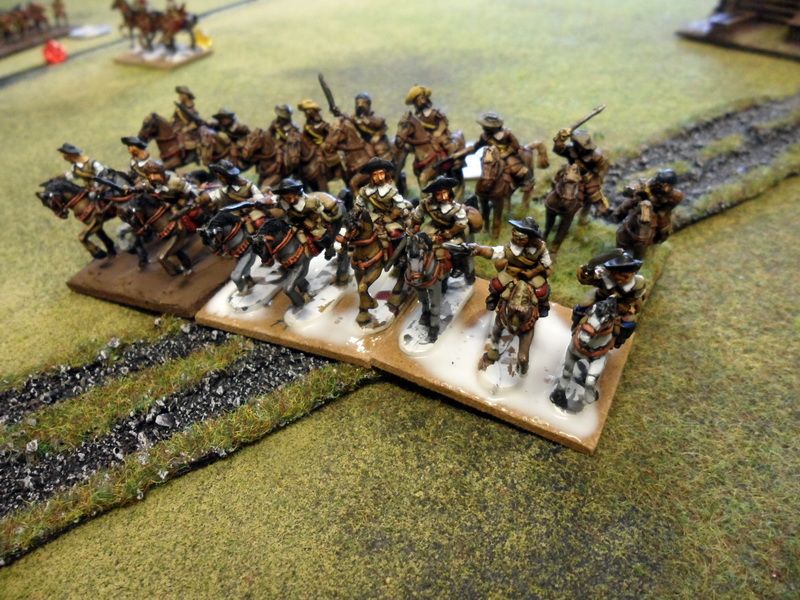
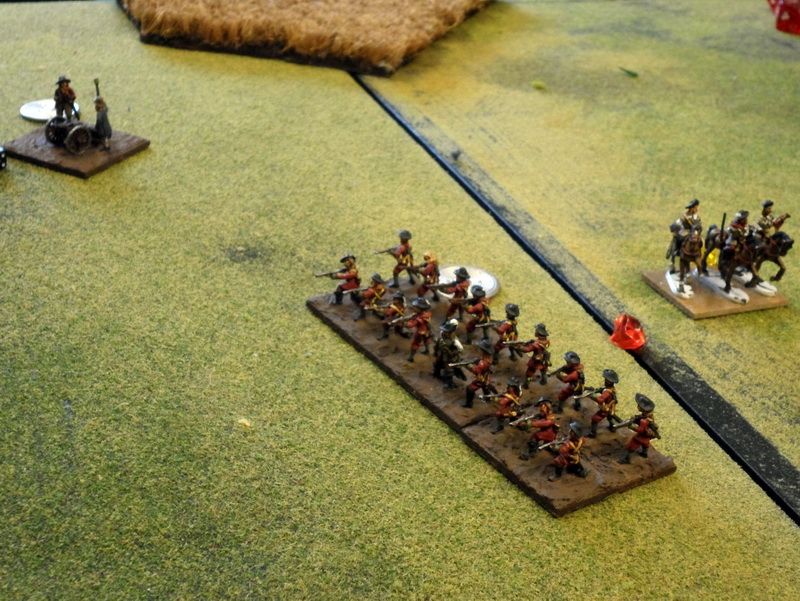

The scenario was battle of Patrols, Andreas as the weaker player rolled for an additional effect and moved a piece of terrain on the battlefield. Andreas also placed a peasant informer so that one of his flanks were well shielded from a Polish flanking maneuver - meaning that my company of 3 dragoons had to move in on the table from the opposite side (unless the peasant informer was removed from the table due to a "Treachery" roll).
The terrain features in this scenario, for both sides to recon, were a hill near the Lithuanian deployment zone, a farmyard at the center of the table, and a small forest near the Swedish deployment zone.
The Swedish force was tiny but the Lithuanian force wasn't that much bigger, and additionally the Polish dragoon squadron of 4 bases (the larger of the two squadrons) began the battle in Panic - and kept panicking for two turns!!
The Lithuanian cossack style cavalry began making a sweeping move around the battlefield towards the left flank, keeping out of Swedish musket and artillery case shot range. Riding in open order they swiftly reconnoitered the first objective (the hill) but were cautious not to get too close to the farmyard just yet.
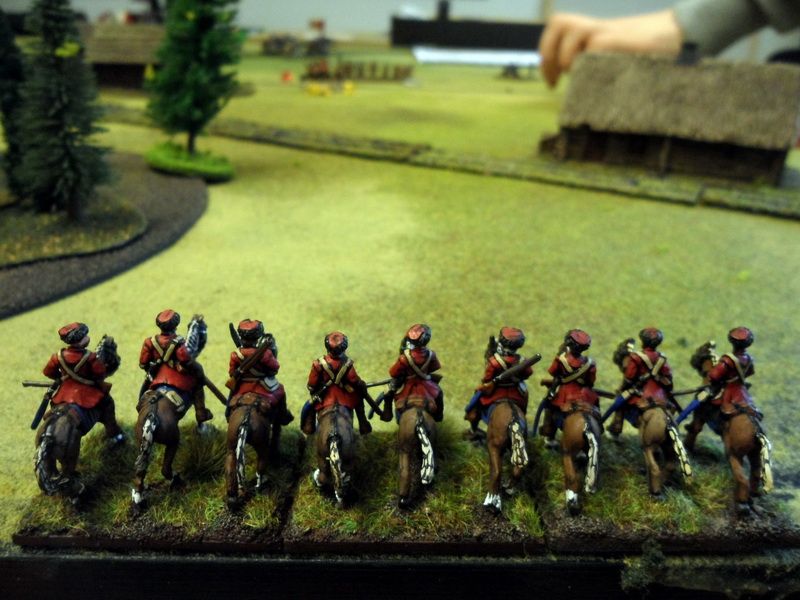 The Swedish infantry and artillery prepared themselves for the incoming cavalry on the left flank, while the Reiters had been grouped into a large squadron and rode towards the Polish dragoons that failed to rally time and time again.
The Swedish infantry and artillery prepared themselves for the incoming cavalry on the left flank, while the Reiters had been grouped into a large squadron and rode towards the Polish dragoons that failed to rally time and time again.On turn 3 the Polish dragoons arrived from the far right flank, but were out of LoS and didn't force any morale test on the enemy. They were however near the small forest objective and would reach it next
 turn. In the meantime the Swedish reiters kicked their horses into a charge, it was not until now that the Polish dragoons managed to rally,
turn. In the meantime the Swedish reiters kicked their horses into a charge, it was not until now that the Polish dragoons managed to rally,  the nearby commander wasted no time and quickly gave them the order "Defend". The dragoons dismounted even as the reiters were mere yards away. And just as the Reiters reached them with the second part of their charge move the Dragoons unleashed fire with their half-muskets. The enemy reiters didn't even have a chance to open fire with their pistols before the surprisingly accurate fire cut down a full base and forced the reiters to withdraw and become disorganized.
the nearby commander wasted no time and quickly gave them the order "Defend". The dragoons dismounted even as the reiters were mere yards away. And just as the Reiters reached them with the second part of their charge move the Dragoons unleashed fire with their half-muskets. The enemy reiters didn't even have a chance to open fire with their pistols before the surprisingly accurate fire cut down a full base and forced the reiters to withdraw and become disorganized. The Polish dragoons had saved themselves at the very last second. Both commanders looked at the result in disbelief, still the battle was just unfolding. On the left flank artillery fire showered the incoming Elite cossack style cavalry with shrapnel , inflicting a single wound
 and forcing the Lithuanian riders to disengage and ending up disorganized. The regular cossacks however rode through the shower of musket fire, passing their morale test, and crashed into the musketeers who were defeated and began withdrawing. The first round of combat ended a defeat for the Swedes, but they kept calm as they
and forcing the Lithuanian riders to disengage and ending up disorganized. The regular cossacks however rode through the shower of musket fire, passing their morale test, and crashed into the musketeers who were defeated and began withdrawing. The first round of combat ended a defeat for the Swedes, but they kept calm as they 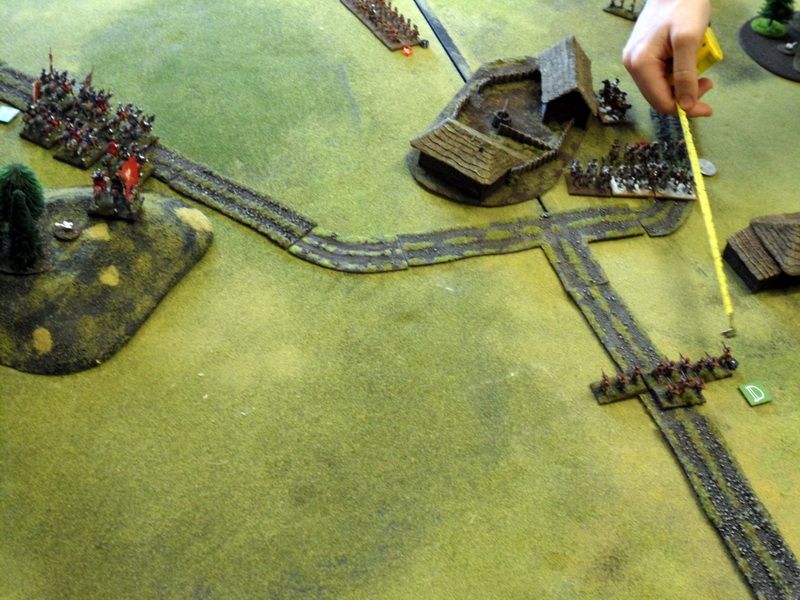 were pushed back - however the second round saw them flee and they fled straight towards the small company of Polish dragoons which had now dismounted and began firing at them from the opposite direction.
were pushed back - however the second round saw them flee and they fled straight towards the small company of Polish dragoons which had now dismounted and began firing at them from the opposite direction.The Swedish gun still had the Lithuanian cavalry in its field of vision and unleashed a second round of case shot hoping to break the remaining cossack style squadron but it failed with its purpose, the Lithuanians too focused on hunting down the infantry to care about their own losses.
Back near the farmyard the reiters had regrouped, and the nearby
 Swedish commander ordered them to attack once again - and so they did. The charge once again took them into contact and the half-musket fire from the Polish dragoons was less accurate and less deadly this time around - however the reiters lost another base from the shooting and surprisingly ferocious close combat with the dragoons. Both sides were bloodied, and the first round of combat ended with the stubborn withdrawal of the Polish dragoons that just refused to turn and flee. They did however succumb to the pressure after the second round of combat and the remaining 2 bases fled the field.
Swedish commander ordered them to attack once again - and so they did. The charge once again took them into contact and the half-musket fire from the Polish dragoons was less accurate and less deadly this time around - however the reiters lost another base from the shooting and surprisingly ferocious close combat with the dragoons. Both sides were bloodied, and the first round of combat ended with the stubborn withdrawal of the Polish dragoons that just refused to turn and flee. They did however succumb to the pressure after the second round of combat and the remaining 2 bases fled the field.Both sides had 4 victory points each for the objectives at this time. The final turn was all about getting the last 2 points. The Lithuanian
 commanders rode towards the center objective and claimed it, while the reiters moved towards the hill and braced themselves. The Lithuanians had one last chance to prevent a draw of victory points - their units were unfortunately in a bad position so they could not charge properly - they could however move up and fire at the Swedes with their bows and arquebus handguns - hoping to break the Swedish morale and prevent them from getting the victory points. The plan failed as the Lithuanian accuracy during this last turn was abysmal.
commanders rode towards the center objective and claimed it, while the reiters moved towards the hill and braced themselves. The Lithuanians had one last chance to prevent a draw of victory points - their units were unfortunately in a bad position so they could not charge properly - they could however move up and fire at the Swedes with their bows and arquebus handguns - hoping to break the Swedish morale and prevent them from getting the victory points. The plan failed as the Lithuanian accuracy during this last turn was abysmal.As such both sides managed to get 6 victory points for the objectives. The casualty tally was high on both sides sides that it was enough to make the battle end a Draw, despite being very close to a Lithuanian tactical victory (the Swedes just needed to lose 1-2 more bases to make it a Polish victory). If only those reiters had been broken and the cossack style cavalry had been played with a bit more restraint and focused on preventing enemy taking ground instead of seeking the thrill of close combat things would have been different.
At the end of the day we had a blast playing this battle.
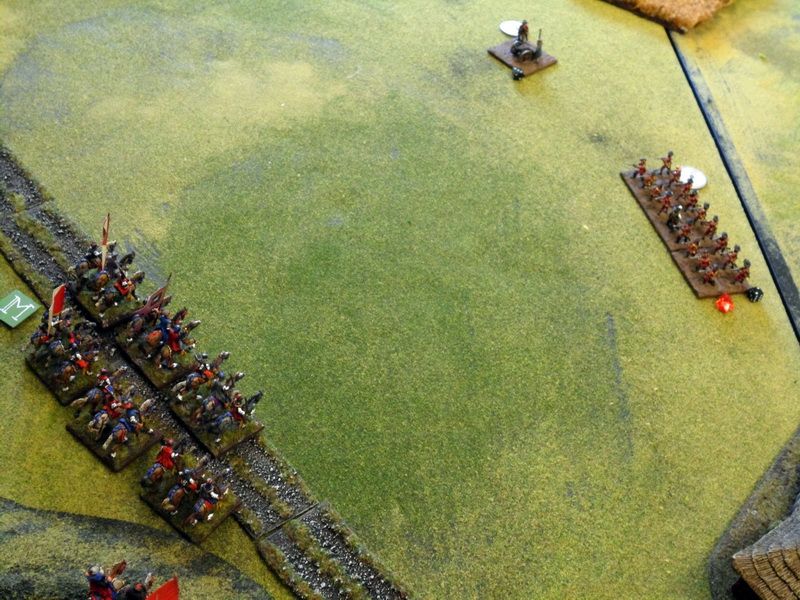
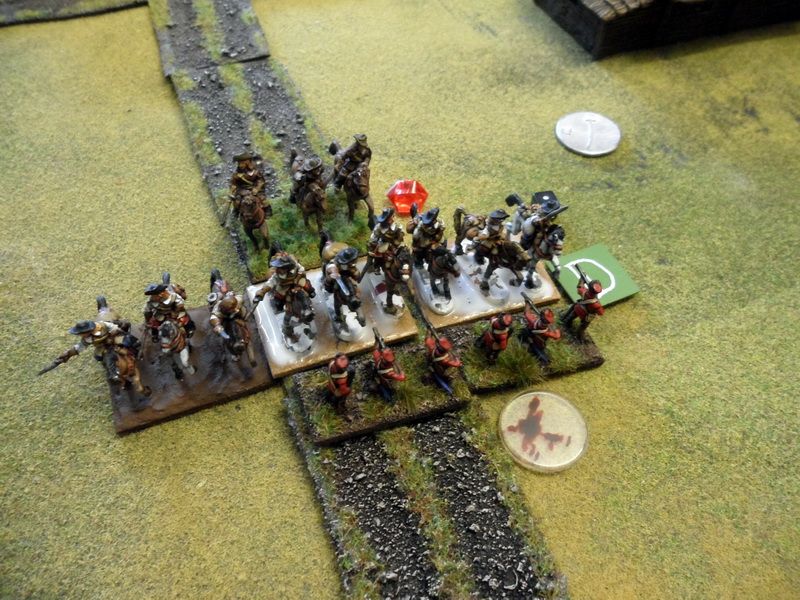
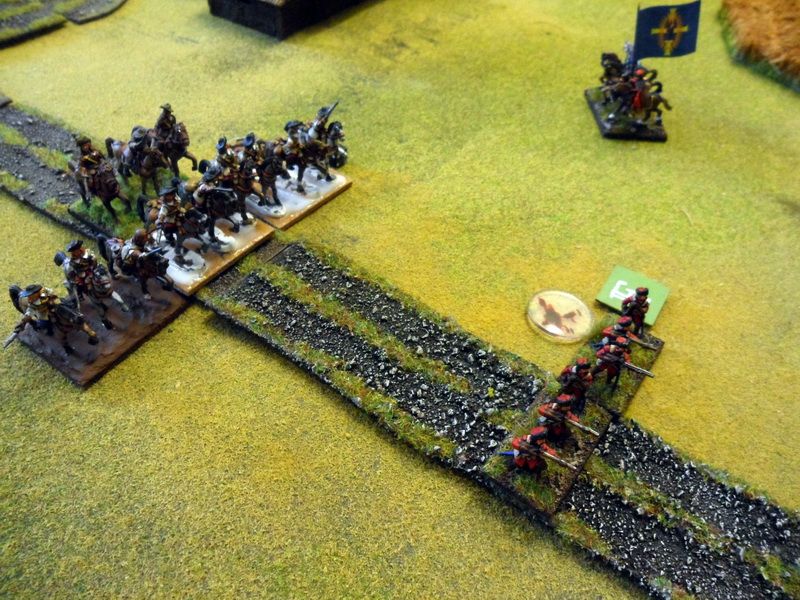
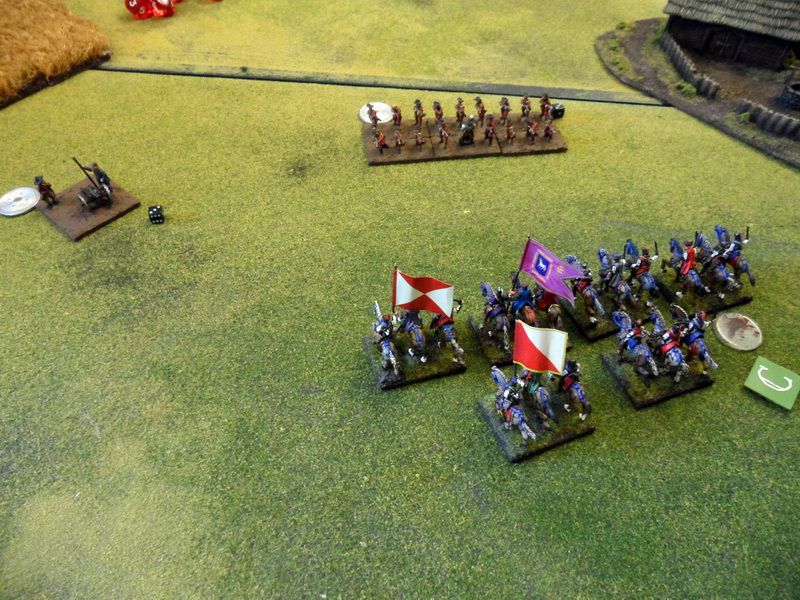

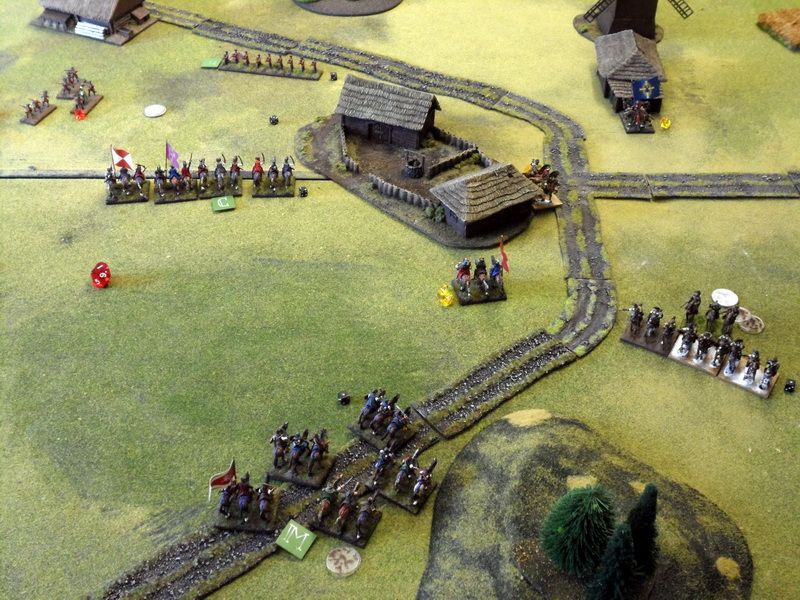

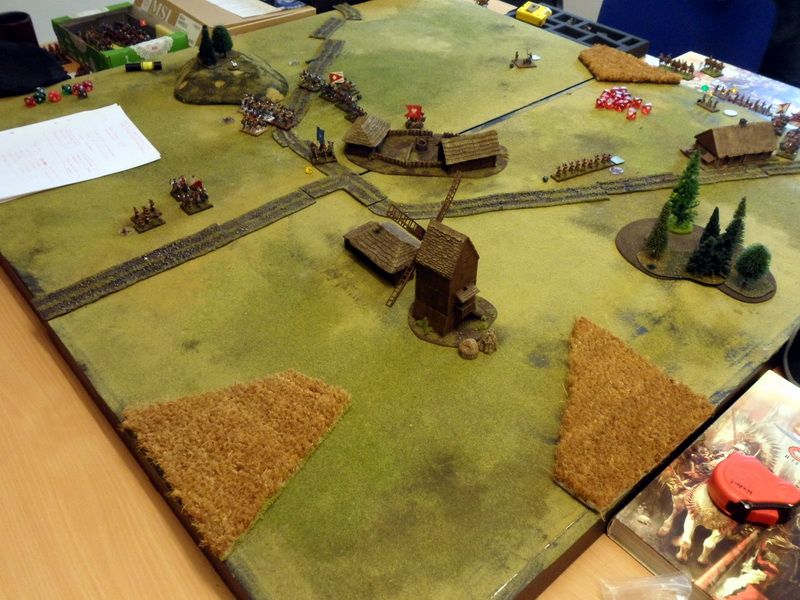
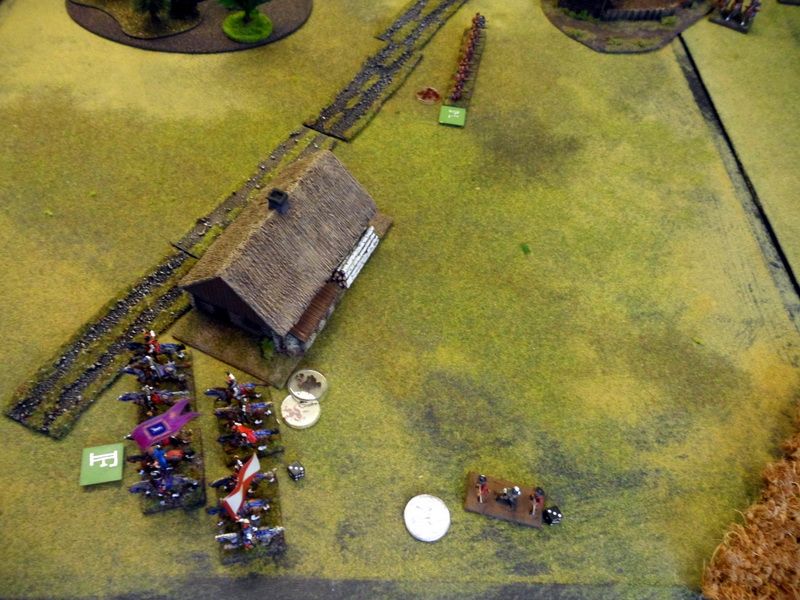
No comments:
Post a Comment